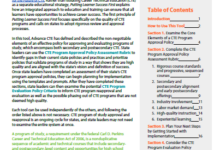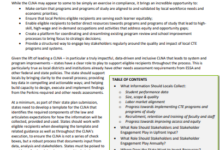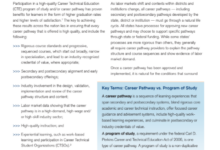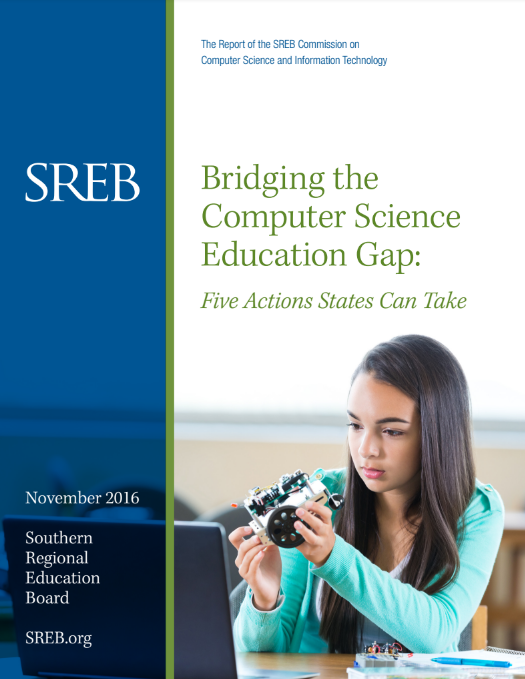In the global labor market, computational thinking skills and knowledge of computer science are required in nearly all career fields. What’s more, jobs in computer science, information technology (IT) and related fields represent a large and growing sector of the economy. Yet the nation is not on track to meet the labor market demand in computing fields.
This report from the Southern Regional Education Board (SREB) draws on research from the Commission on Computer Science and Information Technology to determine five actions for states and schools to help more young people — especially girls, black and Hispanic students, and students from low-income families — learn computer science and explore and choose careers in computing fields. Such actions include:
- Develop state computer science standards for K-12.
- Lay the groundwork for learning computer science.
- Create clear pathways to computing careers.
- Prepare great computer science teachers.
- Educate communities about computer science and computing careers.







